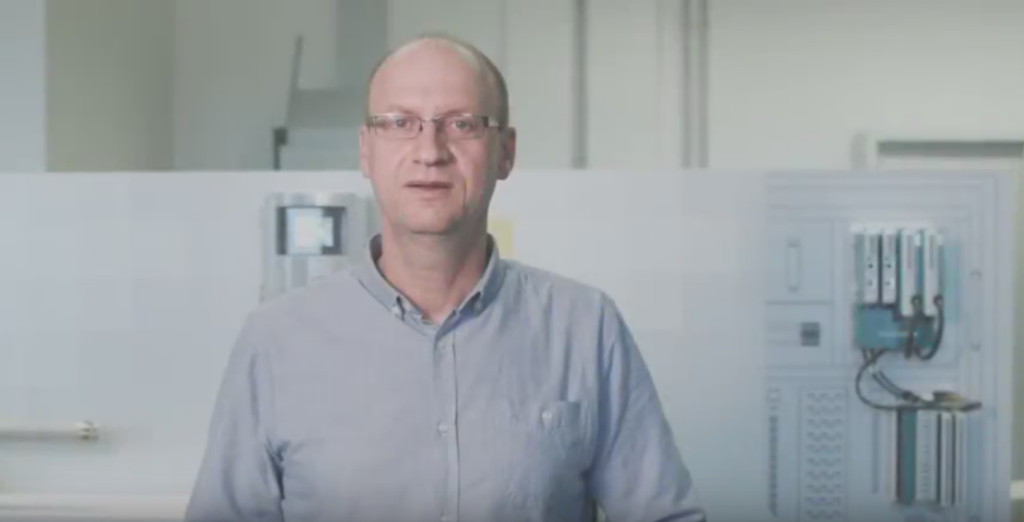Like the process industry, the media landscape is constantly changing. This is hardly a new insight. However, it makes a good starting point as we take a short trip through time from the past to the present day. To then creating a bridge to Synaptic Business Automation (SBA):
Many years ago, most people’s main source of information was their local newspaper. This was gradually edged out by national dailies from major publishers with more financial clout and a bigger circulation. Parallel to this trend, radio and television made it much easier to get hold of information such as news. For the first time, it became possible to assimilate information by the by – whether driving in your car, having breakfast, doing the washing or relaxing on the sofa. And it wasn’t even expensive. You were no longer forced to carry your source of information around with you. You just had to press a button whenever you felt like being watching or listening to the most important events in the background.
Bigger choice and more up to date – print increasingly marginalized by digital offerings
Then came the Internet. For many users, this has been the non plus ultra for several years now when it comes to procuring information, regardless of where they happen to live in the world. And when you consider the vast amount of information on offer, it’s no wonder. What’s more, it’s generally free and available on mobile devices. Not surprisingly, print media are also light years behind digital offerings in terms of up-to-dateness.
One curious fact that’s common to all non-printed news media is that when they first appeared on the scene, all of them were expected to be only short-lived. People said that about radio. They said it about television. And they said it about the Internet. “Television will never survive the market place. People will soon tire of spending their evenings watching a wooden box,” surmised Darryl F. Zanuck, for instance, Vice President of 20th Century Fox, in 1946. How wrong can you be?
There were similar predictions to do with digitalization. It was none other than Bill Gates who claimed in 1993: “The Internet is just a hype.” As an interesting side note, it was only two years later that Microsoft launched the first version of its “Internet Explorer” browser. Yet this was merely one of many beginnings that coincided with the irresistible advance of a “digital” world packed with information.
Digitalized media world makes rapid inroads into everyday life
As a freelance journalist and editor for several years, I was a first-hand observer of many of the change processes touched on here. Not only as a user and consumer but also from the perspective of a “producer” of media content who was directly affected.
In the light of the benefits mentioned above, my initial skepticism as a consumer regarding the digitalized media world – let’s call this perspective number one – quickly made way for systematic use in my everyday routine. I bring myself up to date with current affairs over an early morning coffee with a brief “OK, Google, what’s new?” on Google Home. Although I still subscribe to magazines and newspapers, I now read them on my tablet. After selecting my preferred news categories, I receive push messages throughout the day either on my smartphone. Or directly and free of charge from an app or in my web browser.
My usage patterns as a media consumer have changed, and today people like me are in the majority. Over the last few years, this trend has been accompanied by countless estimates and forecasts relating to the digital market. What will happen to advertising revenues? Will traditional media succeed in retaining their share of the market?
In the meantime, it’s been confirmed that print media are, and will continue to be, the main victims of digitalization. For years now, the impacts of this significant change in the media landscape have been particularly felt by regional newspapers. Many publishers face serious problems due to dwindling sales, and quite a few local papers have already gone bankrupt or been compelled to axe umpteen jobs.
The print market responds with various new models
Paywalls, online subscriptions and articles with digital teasers. Online promotions, online editorial teams and digital video content. Specialized job descriptions like social media manager or online editor. The players in the print market have come up with new models in their efforts to respond adequately to this trend. If they want to stay – or, depending on how they’ve coped so far, return to being – at least pseudo-competitive, they’ve no alternative.
And it’s here that the developments in the media landscape and Yokogawa’s lead theme at ACHEMA 2018 – Synaptic Business Automation (SBA) – overlap. In both cases, the aim is to embrace the digital transformation and keep riding the success wave in times of change.
SBA is the model Yokogawa uses for precisely this purpose.
Let’s now turn to media professionals – in this case, the editors. They, too, have been – and indeed still are – obliged to go with the times and upgrade their capabilities to digital. At any rate, for the most part. If you choose instead to opt out, you’re becoming obsolescent in the fast-moving, digitally transforming “media market”.
That brings us neatly to perspective number two. My path to the media and newspaper world began altogether traditionally. After graduating from university, I spent several years working freelance for various magazines and newspapers. Then I was undertaking a traineeship with a regional newspaper from 2008 to 2010, by which time I had reached my late twenties. For one of those 24 months, I was assigned to support the fledgling online editorial team. Later, as a qualified junior editor, I quickly became acquainted with the extremely tense situation in the print market.
Pen and paper make way for social media
I decided to move south to Baden-Württemberg to improve my chances of finding a job. My new employer, a media company in Heilbronn, promptly added “social media manager” to my original job description of “editor”. For the first time, my increasingly digital remit had been given an official title. Alongside my everyday editorial duties, I also belonged to a project group. This group had been charged with setting up social media channels as well as a paywall on the website. I was later tasked with developing and expanding the firm’s digital online promotions and marketing campaigns. In other words, the media company was progressively adapting to the changing conditions in the market. With newbie editor Frielingsdorf bang in the middle of this process.
In the meantime, I’ve moved right away from classic journalism and currently work as Marketing Manager for digital online and social media. Not journalism but marketing. Not print but digital. Along with the back end of this blog, Facebook, Twitter, LinkedIn and co. have virtually replaced pen and paper as my trusted work tools. I only rarely write traditional articles for newspapers nowadays – and when I do, I’m usually motivated by nostalgia more than anything else.
What has this got to do with SBA, Yokogawa’s lead theme at ACHEMA?
Of course, there isn’t really much time for nostalgia in the global process industry. Like the entire media world, the automation landscape is in the midst of revolutionary changes as a result of the Internet and digitalization. Practically every day, new challenges arise to disrupt daily routines. The solution isn’t always evident at first glance, and the path to take you there is often obscured. The media landscape of a few years ago sends its regards once again. Similar to many users in the automation industry, numerous publishers, editors and media professionals asked questions like the following. Will it affect me too? Do I need to take action? If so, what? And above all, how can digitalization add value?
Questions upon questions – but the fact remains that to be properly prepared, you must act.
As Bernd Stromberg – the main character in a German comedy series inspired by the BBC’s “The Office” – might have said, “Go with the times or you’ll be gone with time.”
And it’s precisely at this point that SBA comes into play. For example, the media landscape and its various players around the world responded with the above-mentioned models and adjustments to become fit for the future. Yokogawa’s answer for the process industry is “Synaptic Business Automation”. Your partner for process automation has long taken up the gauntlet of today’s increasingly digitalized world by developing exciting concepts based on SBA.
Easy, direct communication
These concepts represent an approach for synthesizing data, systems, organizations, knowledge and supply chains. They help companies achieve a transformation in how they conduct their business. The aim is for individual business units to work together more effectively. And also to eliminate barriers that impede the flow of information and goods throughout the supply chain as well as between companies. By linking data in multiple dimensions, components can be integrated quickly, easily and directly across all corporate units.
Yokogawa will demonstrate SBA in interactive use scenarios with the help of five core issues currently confronting the industry. Analyzer System Integration (ASI), Plant Security, Module Based Automation Engineering, Operation Management and Data Analytics. All of this will be on show at the upcoming ACHEMA. Our goal: to optimize your production environment and make it more resilient.
For all essential information on the Yokogawa booth at ACHEMA 2018, and the chance to arrange an appointment there directly with our experts, click here.
Synaptic Business Automation as the guiding theme at ACHEMA 2018
Ob SBA, ASI, PAT oder Klavier – Basis ist die Natur des Lernens




